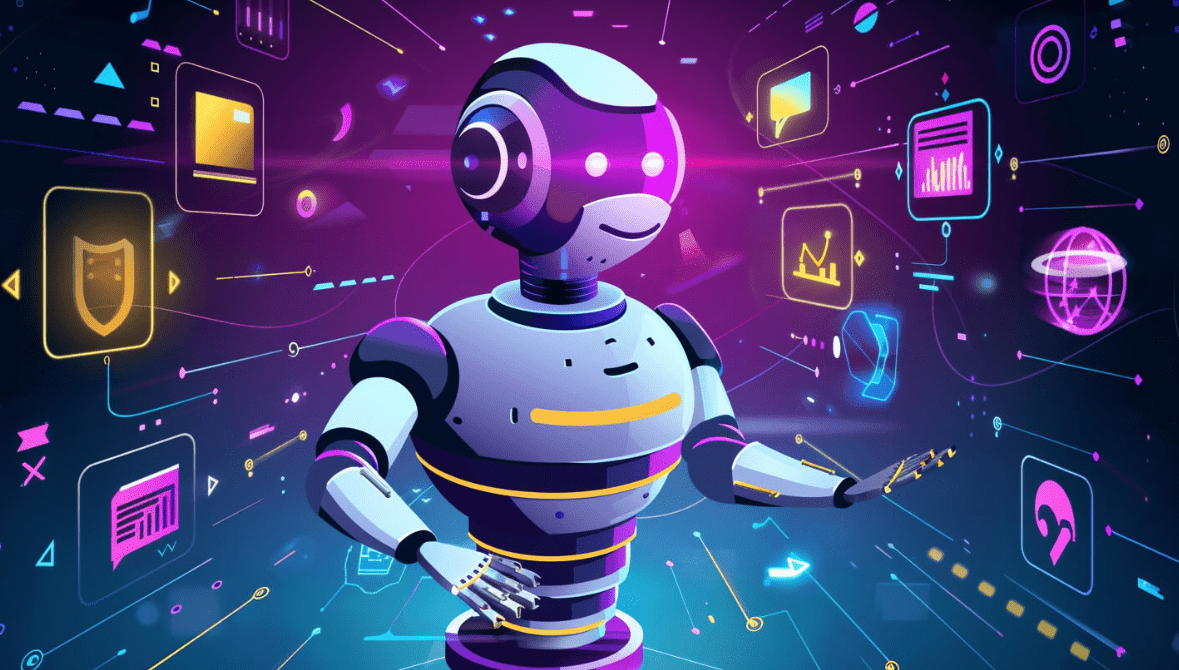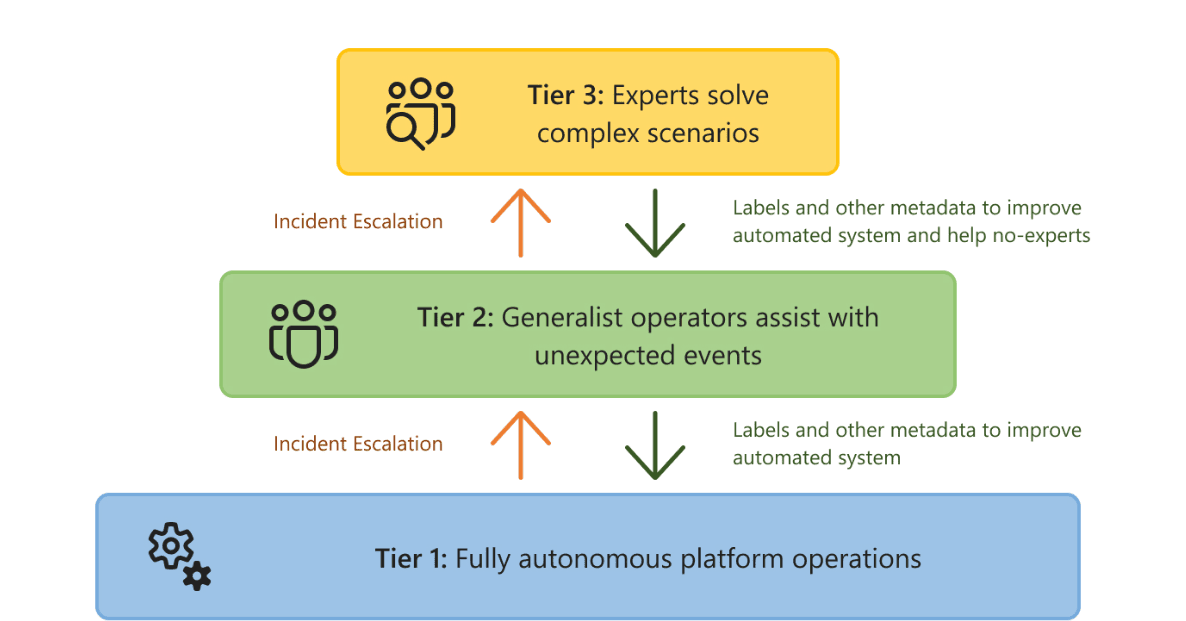
By using AI to handle Tier 1 support issues—which are the most basic and common tech problems—we can free up the human IT team to focus on more complex challenges. We’ll break down what that means, how it works, and how it helps businesses become more efficient—all in simple, easy-to-understand language.
What Is Tier 1 IT Support?
IT support is usually split into different “tiers” based on how complex the problem is:
- Tier 1 is the first line of support. These are the simple, common problems people run into every day—like forgetting a password, needing help to restart a program, or connecting a printer.
- Tier 2 and Tier 3 support deals with more advanced or technical problems that need experienced technicians.
Tier 1 issues make up the majority of IT support requests. They are repetitive, routine, and don’t always need a human being to solve them. And that’s where AI can help.

What Is AI in IT Support?
AI in IT support refers to computer programs that can think and act like humans in certain ways. These systems use data, machine learning, and automation to understand problems and suggest or apply solutions—often without any human help.
Think of it like having a virtual assistant that works 24/7, answers your tech questions, and helps you fix simple problems instantly. It doesn’t sleep, doesn’t get tired, and doesn’t need a break.
Examples of Tier 1 Problems AI Can Handle
Here are some of the common issues AI can help with:
- Password resets
Forget your login info? AI can walk you through verifying your identity and resetting your password automatically. - Wi-Fi connectivity issues
Having trouble connecting to the internet? AI tools can run basic diagnostics, reset your network connection, or tell you what to try next. - Software installation help
Need help installing an approved app? AI can guide you step-by-step or even automate the process. - Account access problems
If you’re locked out of a system, AI can analyze why and help you get back in without waiting. - Frequently Asked Questions (FAQs)
AI can answer questions like “How do I access my email remotely?” or “What printer should I use?”
How Does AI Help in These Situations?
AI uses chatbots, virtual assistants, and automated workflows to handle these requests. Here’s a simple breakdown of how it works:
- The user has a problem
Let’s say someone can’t log into their email. - They talk to an AI-powered chatbot
Instead of waiting for a human, they type their issue into a chat window. - The AI understands the problem
Using keywords and past examples, the AI figures out what the issue is. - It offers a solution
The AI walks the user through steps to fix it—or just fixes it automatically. - If it’s too complex, it hands it off to a human
If the AI can’t solve the issue, it forwards the case to a real IT technician.
This process saves time, reduces frustration, and gets people back to work faster.
Why This Is a Big Deal for Businesses
Using AI in IT support has several major benefits:
- Faster Response Times: People don’t like waiting. AI helps answer questions or solve problems instantly, so employees spend less time waiting and more time working.
- Reduced Workload for IT Teams:Because AI handles the simple stuff, human IT experts can focus on bigger problems—like system upgrades, security issues, or helping with more technical errors.
- 24/7 Availability: AI doesn’t need sleep. Whether it’s midnight or the weekend, AI-powered systems can always be ready to help.
- Consistent Answers: Humans make mistakes. AI gives the same answer every time, ensuring that people get accurate, consistent support no matter who’s asking.
- Cost Savings: By handling a large chunk of routine tasks, businesses can reduce the need to hire more IT staff while still offering excellent support.
What Makes an AI System Successful in IT Support?
Not all AI systems are created equal. To work effectively, the AI needs:
- A well-trained knowledge base
This means feeding the system with past IT support tickets, solutions, and FAQs. - Natural language understanding
So it can understand how people actually talk or type (not just technical terms). - Integration with company systems
For example, if it needs to reset a password or access a user profile, it must connect with tools like Active Directory or HR databases. - Feedback loops
If the AI gets something wrong, it should learn from it so it gets better over time.
What About Security and Trust?
One of the biggest concerns about AI in IT support is: Can we trust it? And the answer is yes—with the right setup.
Good AI systems come with:
- Security protocols to protect sensitive information.
- Human supervision for more complex cases or when AI isn’t sure.
- Access restrictions so the AI only does what it’s allowed to do.
- Audit logs to track everything the AI does for accountability.
When managed properly, AI is both secure and reliable.
Will AI Replace IT Jobs?
A common fear is that AI will take over people’s jobs. But in reality, it’s more of a team effort. AI handles the repetitive work so IT professionals can focus on strategic tasks, innovation, and high-level problem-solving.
In fact, many IT professionals say that AI helps make their job easier and less stressful, not replace it.

Conclusion: The Future of IT Support Is Smarter and Faster
In summary, AI is making a huge difference in IT support—especially when it comes to solving basic Tier 1 problems. By handling routine issues quickly and efficiently, AI allows businesses to save time, cut costs, and keep their employees productive.
It’s like having a super-smart helper that never sleeps and never gets tired, making sure your tech problems don’t slow you down. As businesses continue to grow and rely more on technology, leveraging AI in IT support isn’t just a trend—it’s a smart move toward a faster, more efficient future.
